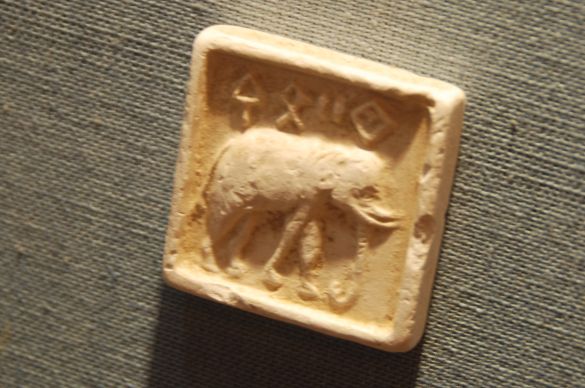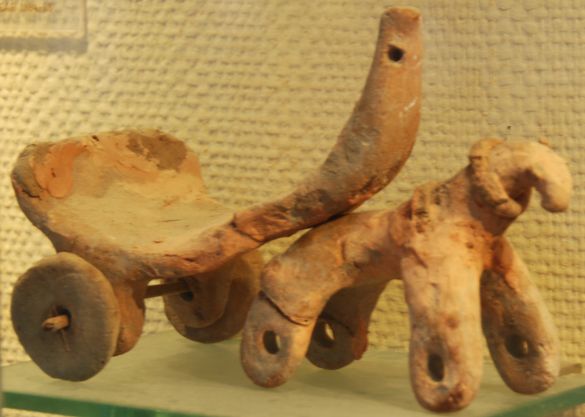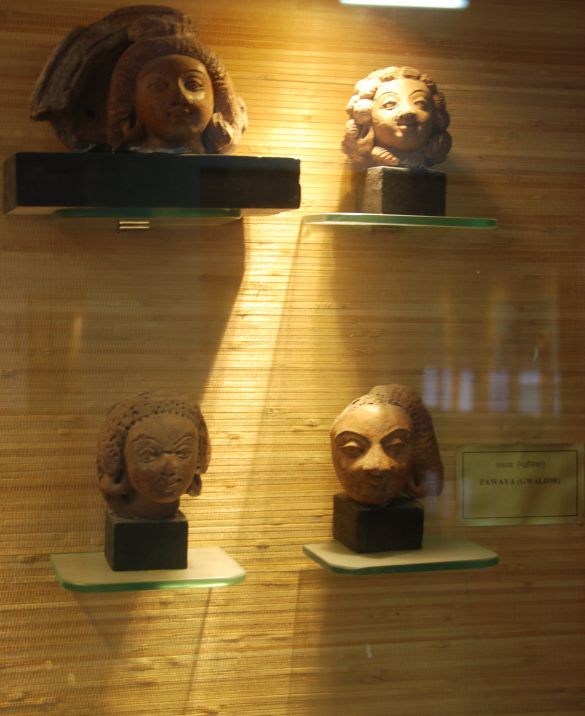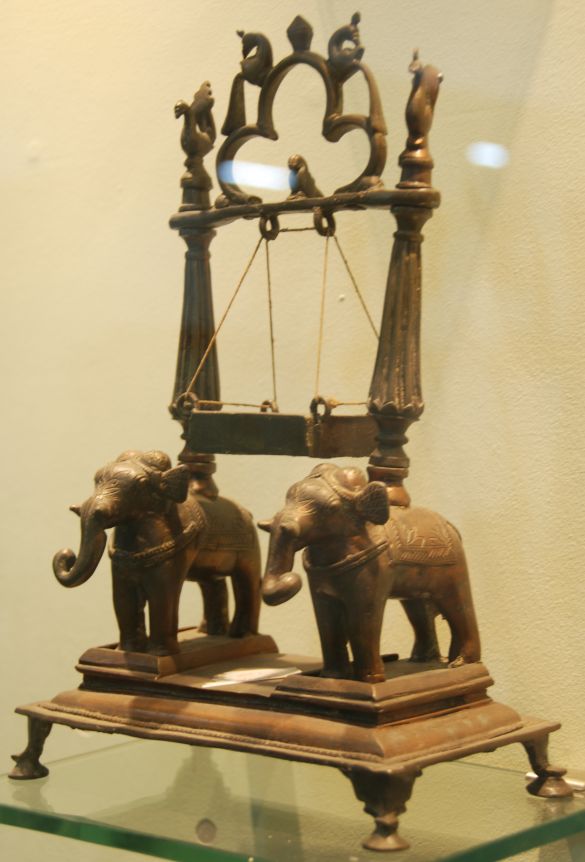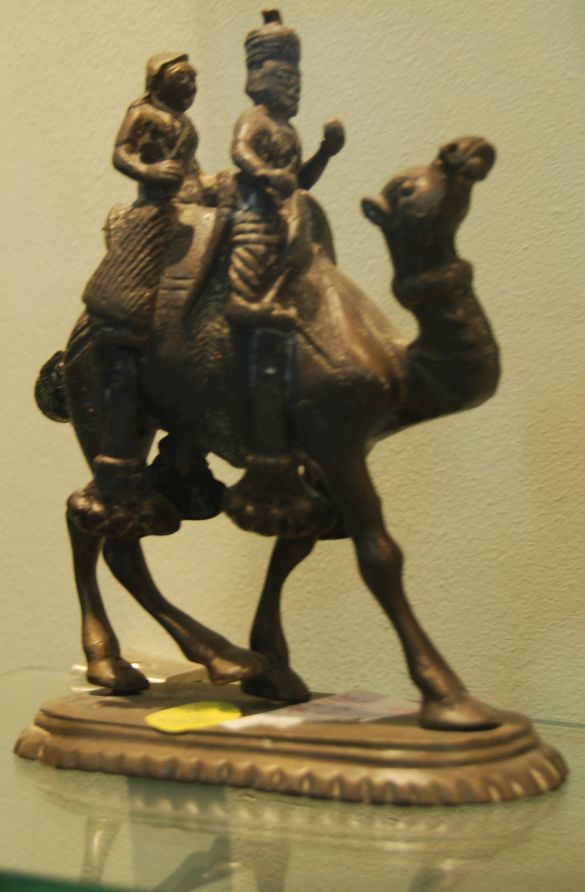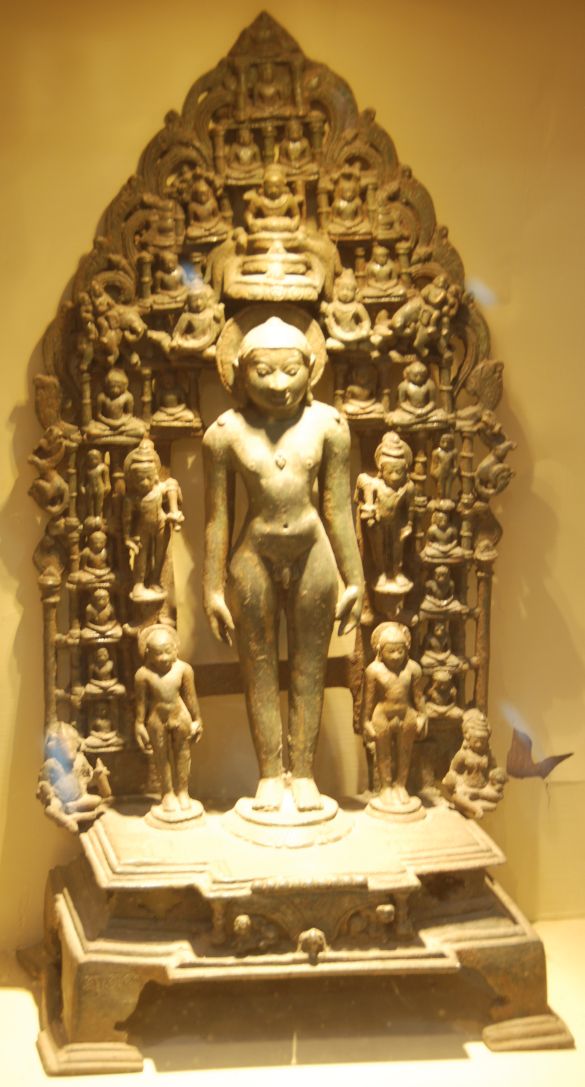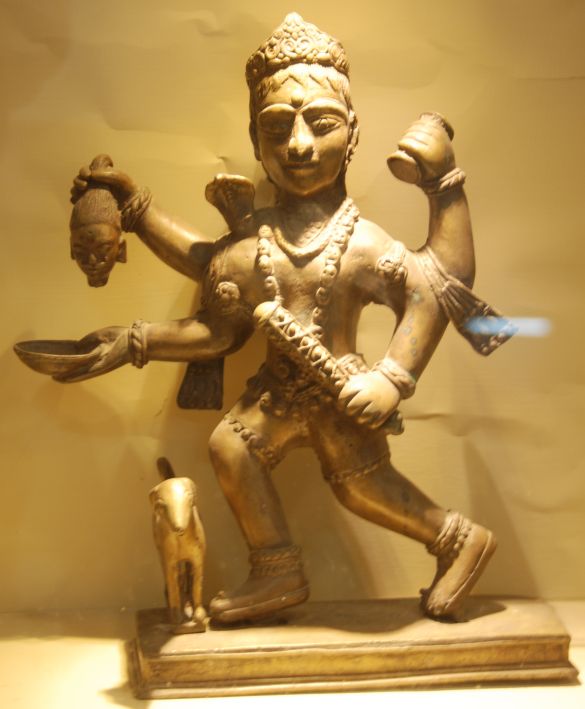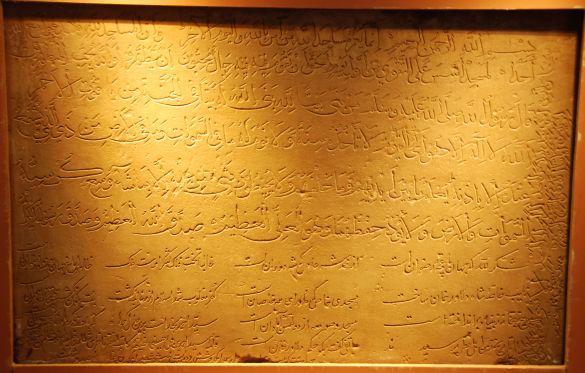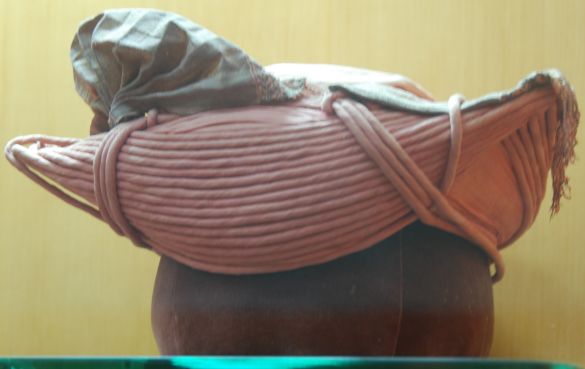Het museum bevat ook archeologische vondsten van de Indus-beschaving. Dat zie je niet zo vaak. Hier een zegel waarvan de betekenis waarschijnlijk niet bekend is. Bij de zegels hing in ieder geval geen toelichting.
In deze blog post probeer ik een beetje te laten zien hoe veelzijdig het museum is. Naast de fantastische sculpturen zien we er miniaturen, restanten van de Indus-beschaving, beelden in metaal, koninklijke kledingstukken, teksten in steen (!), enz.
Indus-beschaving, kopje. De werken die je hier ziet vind ik stuk voor stuk prachtig. Maar er zit 1 juweeltje tussen. Een prachtige prent.
Indus-beschaving. Iets dergelijks heb ik eerder gezien en toen werd dit aangeduid als speelgoed.
Pawaya (plaats in Madhya Pradesh). Ik had twee van deze hoofdjes apart gefotografeerd maar het was te donker en dus waren de foto’s bewogen.
Radha, 18th – 19th century AD, Gwalior.
Dit is het eerste van de metalen beeldjes waarvan het museum een hele grote collectie heeft. Palna, 18th – 19th century AD, Gwalior.
Dhola-Maroo (Dhola-Maru is een romantisch verhaal uit Rajasthan over twee geliefden), 18th – 19th century AD, Gwalior.
Mahavir, 11th century AD, Bhopavar.
Bhairav, 18th century AD, Depalpur.
Stone Insciption, Pawaya.
On a loose slab found at the northern edge of the village this 10 line inscription in Persion, mentions the construction of Sikandarabad on the orders of the minister Safdar Khan during the reign of Sikander Shah Lodi.
De teksten die we hier zien zijn voor mij,
naast belangrijke stukken geschiedenis, kunstwerken.
De taal is zo mooi gebruikt om een inscriptie van te maken.
Kalligrafie met een grote ‘K’.
Persian Inscription.
This Persian record was inscribed in the appreciation of one Abdul Muzffar Mehmood Shah (date is not available).
Stone Inscription, Singhpur.
On a slab recovered from a tank near Singhpur palace, this 11 lines Persian inscription records that during the King of this world and conqueror of Orissa and Jai nagar Shah Husain Malik Hayat Nizam Jashghuri excavated this flowing beauty (ie. the tank) in the name of Shaykh Burhan, son of Yaqub.
Stone Inscription Chanderi
This Persian inscription of 6 lines refers to the construction
of a building by one Umar, son of Husain Shah-Al-Asam who worked in the army of Hushang Shah, the Sultan of Malwa.
Dit is wat mij betreft het juweeltje. Pari holding an unique animal, 19th century AD, Rajput style. Kijk maar eens goed naar het ‘unieke dier/unique animal’.
Het unieke dier is zo uniek omdat het zelf opgebouwd is uit heel veel andere figuren.
Amir Taimoor, 19th century AD, Mughal style.
Een tulband. Turban, Holkar ruler.
Tulband, bovenaanzicht.

